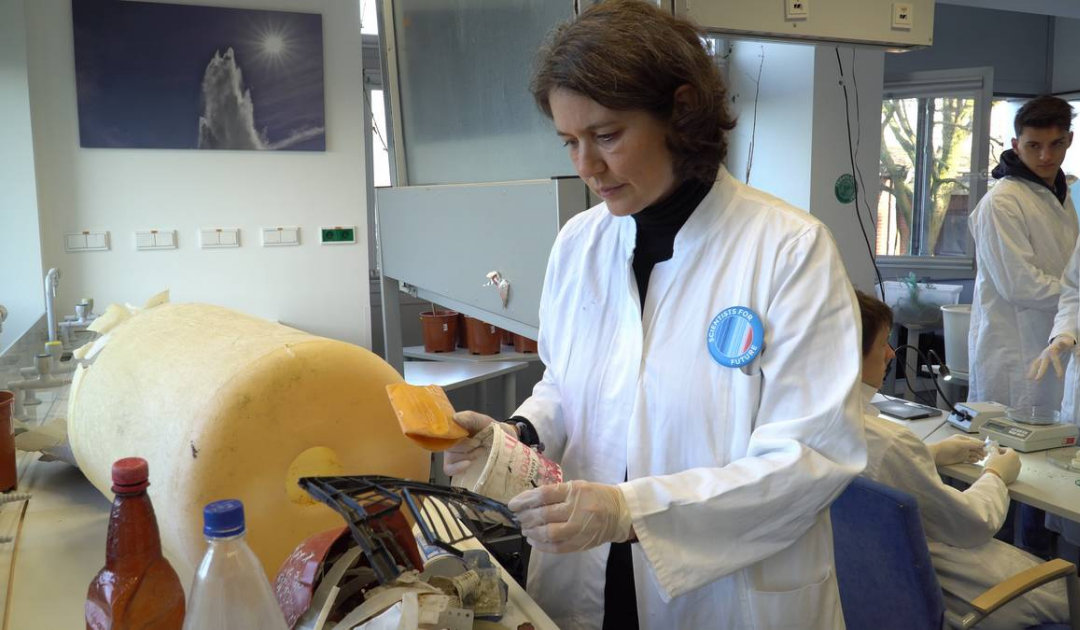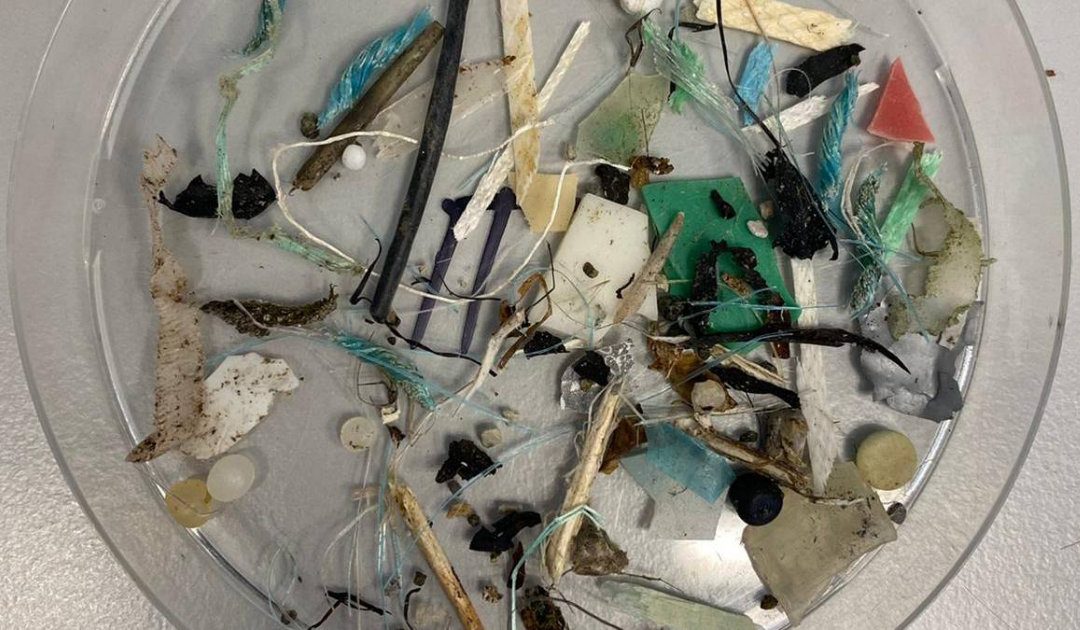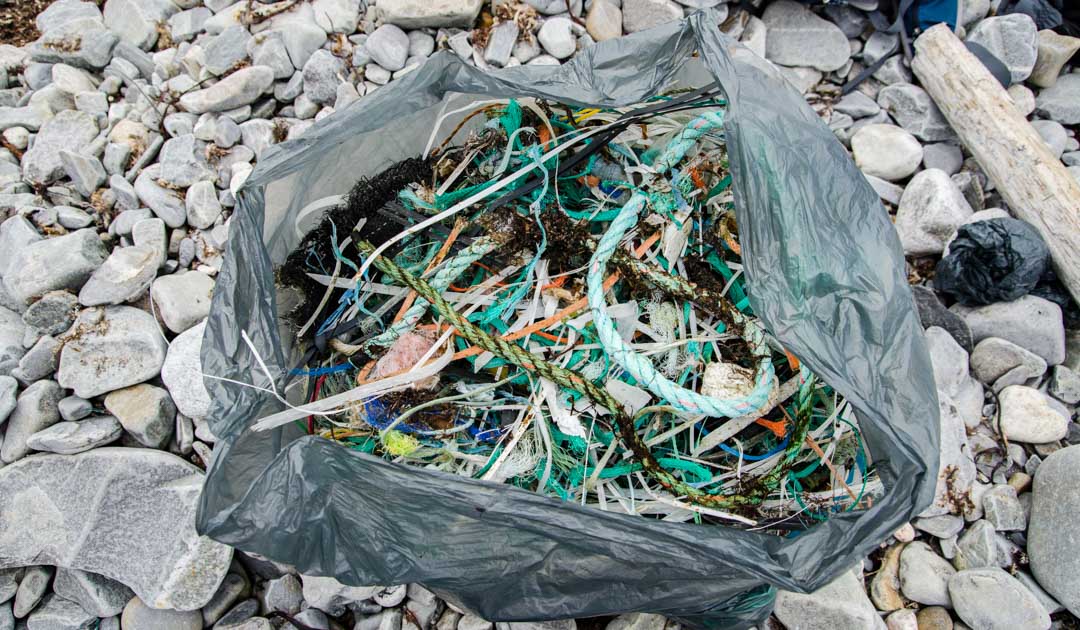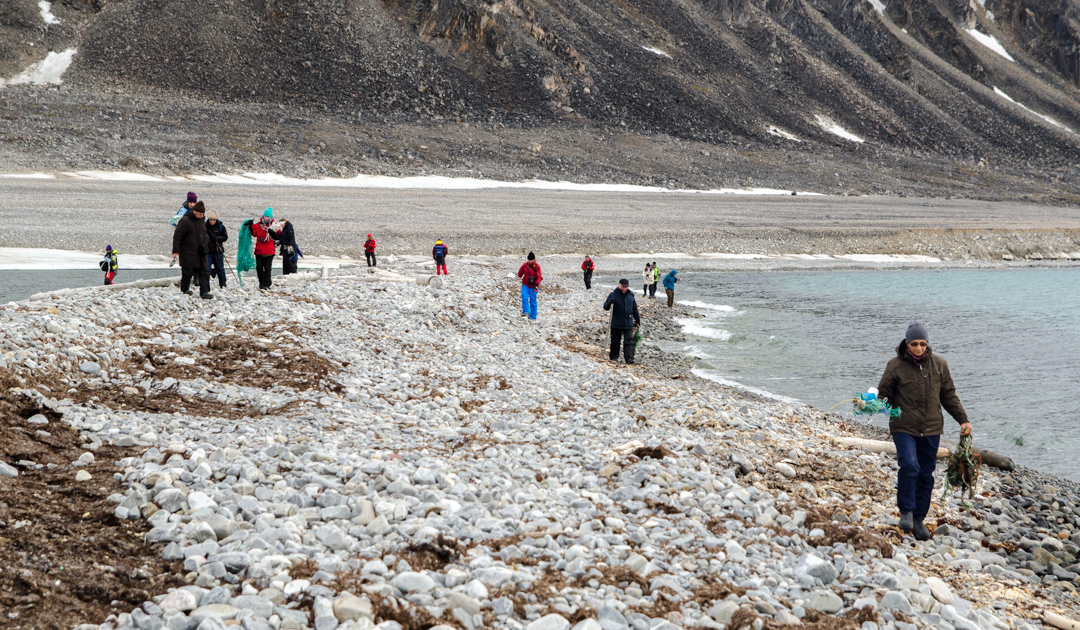
Plastic is both a blessing and a curse. Without this versatile material, numerous everyday objects would not even exist. However, it is not only impossible to imagine our everyday life without this crude oil-base material, but without being also in our environment, too. Nowadays, there is no area on this planet without plastic parts in it. The coasts of Svalbard are also part of it. And a Citizen Science project has now shown where this trash comes from.
In a globalized world, one also has to think globally. This certainly applies to the garbage on Svalbard’s beaches, which a Citizen Science project initiated by polar adventurer, journalist and book author Birgit Lutz and carried out with the AWI had investigated. Pieces washed up on the High Arctic archipelago from Brazil, the U.S., China, Korea and Turkey and were collected by volunteers and examined in more detail by Anna Natalie Meyer and Dr. Melanie Bergmann of the German research institution. Around 80 percent of the 1.6 tons of trash collected between 2016 and 2021 was identified as plastic waste. And if people now thinking: sure, some of the countries mentioned above don’t have a well-developed recycling system, they should now read on carefully: Norway, Denmark, Sweden, Great Britain, Spain, Russia, Italy, Germany: hardly any European country that is not also on the list of countries of origin of plastic waste. Anna Natalie Meyer and Dr. Melanie Bergmann from the AWI were able to identify a total of 27 countries, 18 of them from Europe, whose trash is floating on the beaches and in the water around Svalbard.




The evaluation of the garbage collected by Birgit Lutz and the volunteer Arctic tourists showed that the most substantial part was fishing materials such as nets, drift buoys, insulation material and other material used on fishing vessels. Results show that depending on the collection sites, which were located in a wide variety of locations throughout the archipelago, the percentage of materials attributed to fishing varied, ranging from 30 to nearly 100 percent. The density per square meter also varied, ranging from 1.3 parts to 0 parts. In terms of the type of material the researchers identified, plastic was the undisputed leader: “Our evaluation shows that plastic waste is by far the largest part, accounting for 80 percent,” says study lead author Anna Natalie Meyer. But metals, textiles, glass and processed wood are also included in the study’s list.


As far as identifying the countries of origin of the fishing materials is concerned, it becomes more difficult than with other plastic items such as bottles or packaging materials. The research team’s list primarily includes littoral states Russia and the Scandinavian countries with access to the Barents Sea and the North Sea, which also accounted for the majority of the total waste, at around 48 percent. This is because both seas are popular fishing grounds and, given the volume of ships, a great deal is also lost. But as far as the rest of the trash is concerned, the researchers differentiate between local and distant sources. According to their calculations, about 22 percent of the plastic comes from Europe alone. “From ships and from Arctic settlements, plastic waste enters the sea locally. Remotely, plastic waste and microplastics are transported to the Arctic Ocean via numerous rivers and via ocean currents from the Atlantic, North Sea and North Pacific,” explains Anna Natalie Meyer. That’s why a significant contribution comes from Germany (around 8 percent) of the identified plastic waste. “Against the background that Germany is the European champion in both plastic production and waste exports, this relatively high contribution seems less surprising,” says Melanie Bergmann.


For Birgit Lutz, who has been regularly traveling to Svalbard for years, initiating the Citizen Science project together with the AWI was a matter of the heart. The polar expert’s main concern is that the garbage is not only collected, but that something happens beyond that. “Beach cleaning alone is no longer a solution, it’s Sisyphus work,” she says. Much more important, she says, is that the data gathered can now be used to prove the extent to which plastic pollution has now reached, and that even countries like Germany, which consider themselves “clean,” are contributing to the problem – and not in such a small way. The plastic input simply has to be urgently reduced, recycling is not the solution, but the use of plastic has to be minimized – and in doing so, it is again necessary to fight against lobbyists. Another good effect of the plastic collections, he said, is that participants see the value of the scientific data and get a deep sense of what keeps washing up on beaches. “It does something to people when we end up counting thousands of pieces, in a relatively short time and in a relatively small area – almost at the North Pole. It gives people a lasting fright, and they take that message home with them, too.”
Dr Michael Wenger, PolarJournal
Link to the project website of Birgit Lutz
ON OUR OWN BEHALF
For us at PolarJournal, too, the issue of plastic pollution in the polar regions is enormously important. Julia Hager, who has been working on this issue for more than ten years, conducts workshops for schools with her second project “mountain2ocean” and regularly gives lectures on plastic pollution and how to find a way out of the misery. She is also working with AECO, the Association of Arctic Expedition Cruise Operators, on a communications project on how to further engage Arctic tourists. If you want to know more, you can find a lot of information on Julia Hager’s website.
More on the topic






